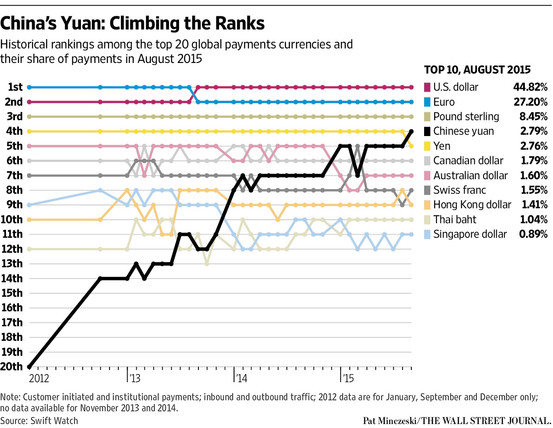In 2012, Swift ranked Yuan at 12th position in the list of top 20 global payment currencies. And now, 4 years later Yuan has moved ahead of Japan’s currency, Yen to place itself at 4th position in the league of most used currencies for cross-border payments. China has thus taken another step ahead in proving its global presence by taking its currency ahead of yen for the first time in the month of August 2016.

High volatility in the Chinese economy and Beijing’s devaluation of the Yuan were reported to be the possible causes for increase in the usage of the Chinese currency in the month of August. Though its share as a global player is still small, only 2.8% as compared to Dollar for 44.8%, Euro for 27.2% and British Pound for 8.5% but with the rise in its position Yuan is sure to grab some attention in the global currency market.
There has been a 50% increase in the volume of foreign exchange trades in China in August 2016 as compared to the same period last year. For the very first time it crossed the 1 million mark in a single month. The devaluation of the currency by the People’s Bank of China is likely to be the enforcing factor behind the shift as the Swift report said. Beijing seeks IMF for including Yuan in its reserve currency fund and has also urged to declare Yuan as an official reserve currency like Dollar, Euro, Pound and Yen.
Yuan can now be used to make payments to China and Hong Kong through a network of more than 1000 banks across 100 countries. Though Hong Kong is the hub for processing payments in Yuan, cities like Kuala Lumpur, Bangkok and Sydney have now opened up clearing centers for Yuan payments. With China speeding its global presence, trading Yuan has now become crucial.





